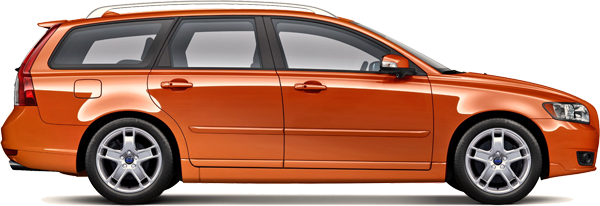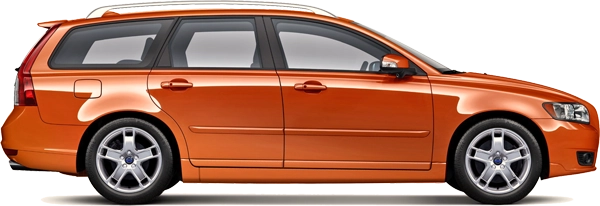The Comparative Analysis :
Volvo V50 D2 (10 - 12) vs. Volvo V50 D3 Geartronic (10 - 12)
€ 26,000

€ 30,400

€ 26,000
Base Price ⓘBase price of a new vehicle with standard equipment in Germany at market launch.
€ 30,400
ⓘBase price of a new vehicle with standard equipment in Germany at market launch. Price Info
Vehicle Dimensions
Тhere is barely any difference in dimensions between the two vehicles. Both cars are the same length and width, but the V50 D2 is 1 cm lower.
V50 D2
V50 D3
1447
1770
2022
1457
1770
2022
1770 mm
Width
1770 mm
2022 mm
Width Incl. Mirrors
2022 mm
1447 mm
Height
1457 mm
2640
4522
2640
4522
4522 mm
Length
4522 mm
2640 mm
Wheelbase
2640 mm
Vehicle Weight
V50 D2
V50 D3
1380 kg
Kerb Weight
1519 kg
1900 kg
Gross Vehicle
Weight
Weight
2020 kg

Weight Difference:
139 kg
9.15 %

General
V50 D2
V50 D3
M
Generation
M
Estate Car
Car Body Style
Estate Car
Diesel
Fuel Type
Diesel

Front-wheel drive
Drive
Front-wheel drive

6-speed manual transmission
Transmission
6-speed automatic transmission
Engine
V50 D2
V50 D3
Straight-four diesel engine with turbocharger
Engine Type
Straight-five diesel engine with turbocharger
D4162T
Engine Code
D5204T5
4
Valves
4
4
Cylinders
5
1560 CC
Engine Capacity
1984 CC
113 bhp
at 3600 rpm
Power
148 bhp
at 3500 rpm
V50 D2
113 bhp
148 bhp
V50 D3
270 NM
at 1750 rpm
Max. Torque
350 NM
at 1500 rpm
V50 D2
270 NM
350 NM
V50 D3
Performance
V50 D2
V50 D3
121 mph
Maximum Speed
127 mph
11.5 sec
Acceleration 0 to 62 mph
9.7 sec
62 mph
62
mph
mph
160 m
0.000 sec

V50 D2
62 mph
62
mph
mph
135 m
0.000 sec

V50 D3
▶ REPLAY
12.21 kg/bhp
Weight-to-Power Ratio
10.26 kg/bhp
V50 D2
12.21 kg/bhp
10.26 kg/bhp
V50 D3
Fuel Economy / Emissions
V50 D2
V50 D3
Fuel Economy
66 mpg
combined
49 mpg
V50 D2
66 mpg
49 mpg
V50 D3
54 mpg
city
36 mpg
74 mpg
motorway
61 mpg
55 L
Fuel Tank Capacity
60 L
795 mi
Range
642 mi
V50 D2
795 mi
642 mi
V50 D3
Environmental Impact
88.5 kWh
Total Energy Consumption
per 100 miles ⓘThe total energy consumption per 100 miles is the amount of energy consumed by a vehicle when burning fuel or using electricity per 100 miles (final energy), and the energy required to produce the appropriate amount of fuel or electricity (primary energy).
per 100 miles ⓘThe total energy consumption per 100 miles is the amount of energy consumed by a vehicle when burning fuel or using electricity per 100 miles (final energy), and the energy required to produce the appropriate amount of fuel or electricity (primary energy).
119.3 kWh
V50 D2
88.5 kWh
119.3 kWh
V50 D3
Euro 5
Emission Standard
Euro 5
114 g/km (NEFZ)
CO2 Emissions
154 g/km (NEFZ)
Practical Convenience
V50 D2
V50 D3
5
Doors
5
5
No. of Seats
5
520 kg
Maximum Payload
501 kg
417 L
Boot Capacity
417 L








1307 L
Boot Capacity (Seats Down)
1307 L

















